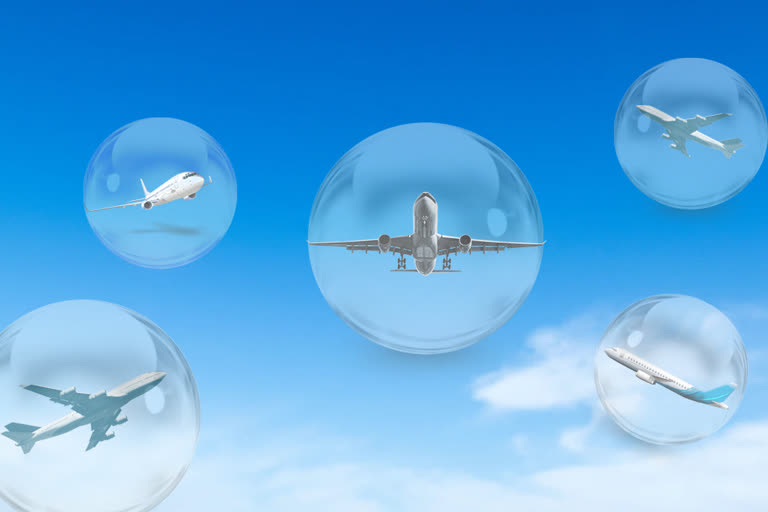Hyderabad: Taking a step further towards resumption of international air travel after nations began shutting their borders earlier this year in response to the coronavirus outbreak, India on Thursday said it has established individual bilateral ‘air bubbles’ with France, Germany and the US that will allow airlines of each country in the pact to operate international flights.
Under the agreement, Air France will be operating 28 flights between Delhi, Mumbai, Bengaluru and Paris from 18 July to 1 August, while United Airlines of the US will be flying 18 flights between 17 July and 31 July.
“Till international civil aviation can reclaim its pre-Covid numbers, I think answer will lie through bilateral air bubbles, which will carry a possible number of people but under defined conditions as countries are still imposing entry restrictions including India,” civil aviation minister Hardeep Singh Puri said.
For those wondering what exactly are ‘air bubbles’ and why has the Indian aviation sector taken this route despite the end of the Coronavirus pandemic being nowhere in sight, here’s a detailed explanation:
What is an air bubble?
Air bubble or travel bubble is essentially an agreement between two countries that allows for travel across borders for non-essential trips.
Under such deals, fixed number of flights operate non-stop between pre-agreed destinations for a certain duration of time. Usually, such corridors exempt long quarantines for citizens of both the countries. However, the conditions may vary depending on different arrangements with different nations.
Why did India consider air bubbles?
India started considering air bubbles after the US complained that India was violating flight agreements by banning US airlines but allowing Air India to operate under the Vande Bharat Mission to bring Indian citizens back from several nations.
A notice by the US Department of Transportation dated 22 June said: “It appears that Air India may be using its passenger repatriation charters as a way of circumventing the GoI (government of India)-imposed prohibition of all scheduled services. This situation… creates a competitive disadvantage for US carriers vis-à-vis Indian carriers.”
Hence, forming an air bubble is now being seen as India’s response to allegations by the US government of distorting the level playing field. Also, the step could provide some relief to the Indian aviation sector which is staring at a revenue loss Rs 24,000-25,000 crore this fiscal year, according to Crisil estimates.
Which countries have signed such air bubble treaties?
The first such air bubble formed after the coronavirus outbreak was reportedly between China and South Korea when both the nations agreed to start facilitating some business travel starting May.
Read more:Explained: Reasons behind the gap in India's wholesale and retails inflation rates
New Zealand and Australia have also announced the set-up of what they call a “Tasman travel bubble.” But it hasn’t been made operational yet amid a spike in cases in Australia.
Countries of Estonia, Lithuania, and Latvia have also allowed free travel within the countries, while restricting outsiders from entering.
What are the risks of such air bubbles?
While travel bubbles do seem like a smart way to restart international travel, there are high risks of a resurgence in the coronavirus infection in these nations once borders are reopened.
Ideally, the two countries involved in the deal should have flattened the curve of the coronavirus infection and appear to have the outbreak under control. But, neither India nor US look anywhere close to that situation.
With almost 1 million Covid cases till date, India is struggling to control the pandemic. While the US has by far been the worst affected, with over 3.5 million cases and the highest number of deaths. Opening travel bubbles is likely to make the two countries even more vulnerable to the outbreak.
A renowned epidemiologist from Thailand Thira Woratanarat, writing on his Facebook page, thrashed the idea of air bubbles saying it is too early as the Covid-19 pandemic is still ravaging many parts of the world. “We should not even entertain the thought of travel bubble arrangements… it would be asking for trouble.”
(ETV Bharat Report)



